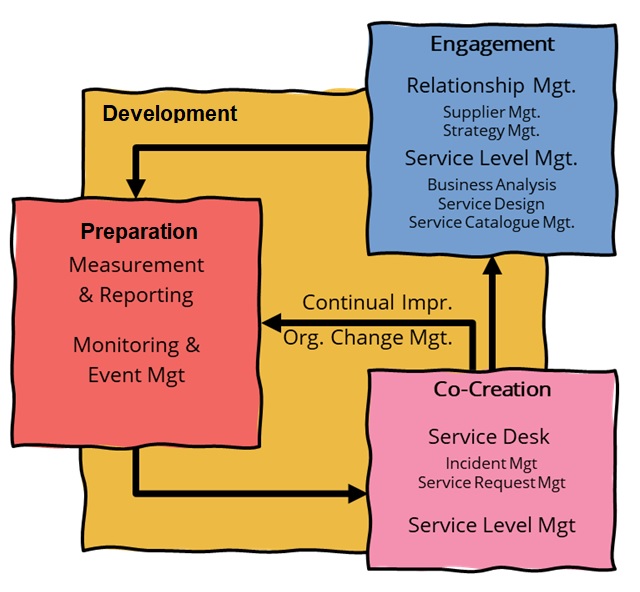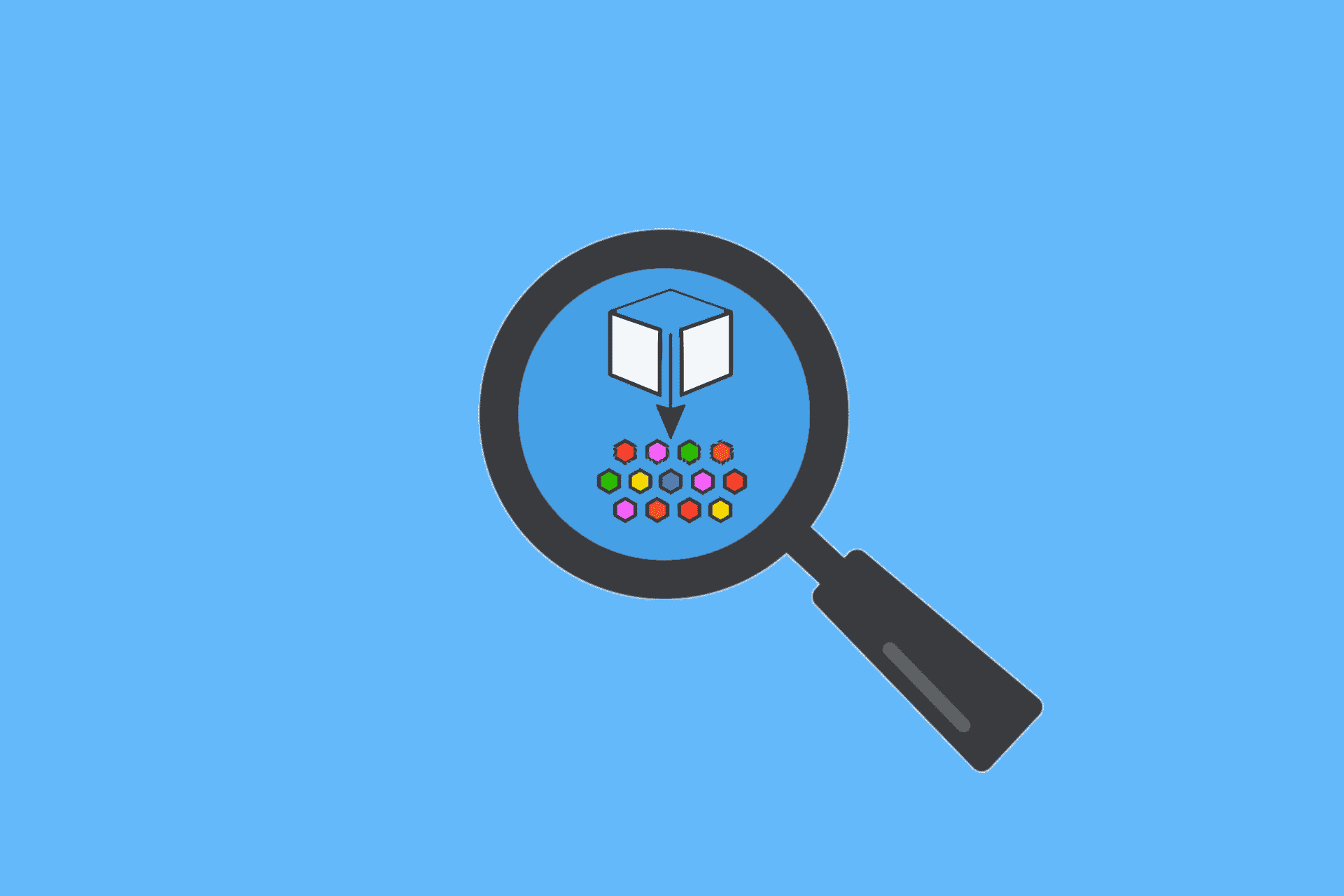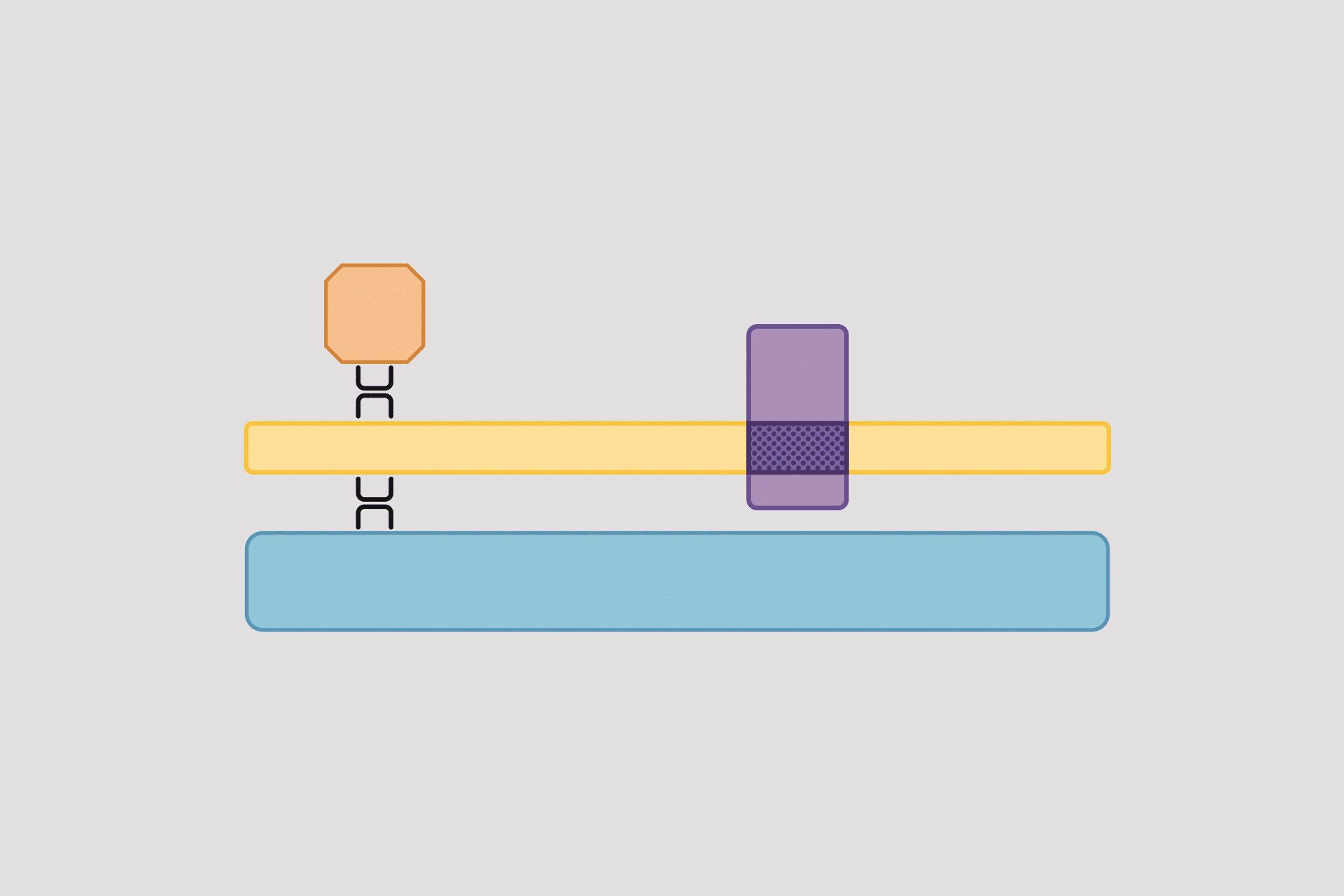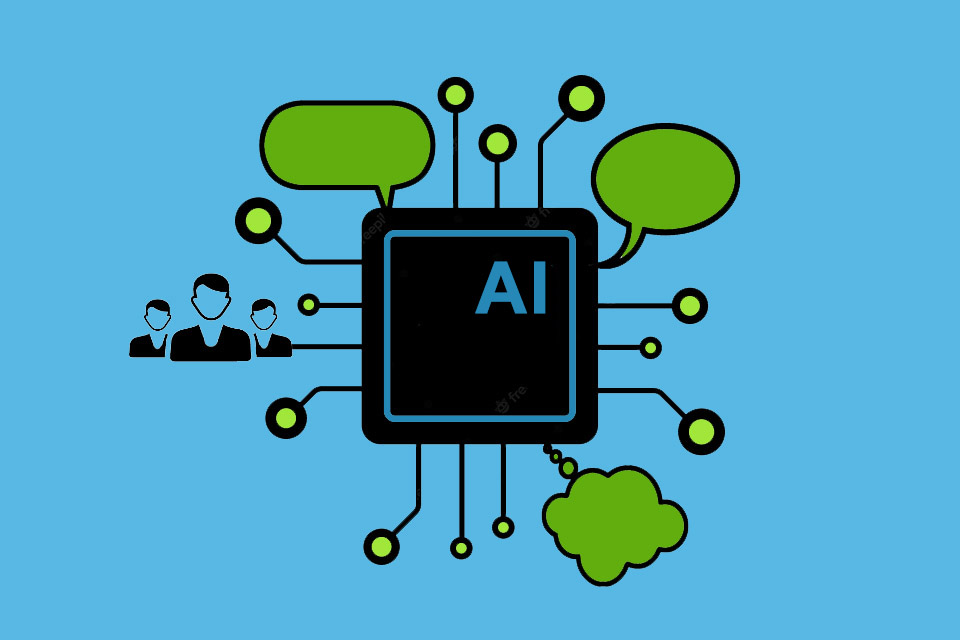Experience Level Agreements (XLA) – Part 1
From Experience to Service Experience to Experience Level Agreements and Experience Management
Experience Level Agreements (XLA) are agreements between a service provider and a customer that are based on the user’s experience with the provider’s services. They measure not only the quantitative aspects of the service, but also the qualitative aspects such as satisfaction, usability and emotions.
This first part of the two-part series of articles first explains the term experience and then clarifies the question of why service experience is helpful. The terms XLA and XM are then brought to life.
The second part builds on this introduction and provides an answer to the question of how IT service providers can utilise and implement XLA. Finally, some prerequisites for XLA are explained and important benefits are outlined.
What is experience?
When approaching the term Experience Level Agreements, it is helpful to first clarify the term Experience. At first glance, this is the important difference compared to service level agreements. And how different the experience is or is perceived in IT can be explained very vividly using the example of the Soellner family:
Father Soellner is a die-hard Windows fan (at least as far as office computers are concerned). He is a master of the right mouse button, uses the keyboard to get his work done efficiently, saves his files in the cloud so that he can work from anywhere and likes to go into the registry entries from time to time. Mum Soellner (his wife) does the bookkeeping on an 11-year-old MacBook. The programme is installed there locally and she takes care of the data backup on an external hard drive herself. Their older daughter is a teacher and has to comply with all the regulations of the German education ministry scene. Her younger daughter does her tax return on her iPhone and is very happy with the little apps. She edits her own podcast on the iPad and does it incredibly quickly and professionally with just her fingers.
This example is real and will be found in many German families (and companies) in one way or another. It shows that expectations of IT and therefore the personal experience are very different.
But what actually is experience? Shouldn’t the first thing to do is to narrow down this term? That would probably make communication much easier:
- Experience generally describes customer satisfaction (or dissatisfaction) with a brand, a supplier, a product or a service. Experience therefore relates to different areas or levels in the encounter between customer and supplier.
- Experience is also a positive or negative (perceived) customer interaction. In this view, we refer to specific encounters between customer and supplier.
- Experience always has a temporal reference. On the one hand, it can be an immediate event of a specific service interaction or, on the other hand, it can describe the cumulative experience with the supplier.
Why is service experience helpful?
I would like to revisit and expand on the example of the Soellner family described before, with its many different expectations and therefore also different experiences in relation to IT and IT services.
Over the last few decades, service level agreements have become established in many places, which among other things (contractually) define what an IT service provider must deliver and what customers and users can expect. These SLA are usually very precisely specified and standardised. However, a number of things have changed among users (as in the case of the Soellner family). For example, the attitude of users towards IT has become more demanding. IT has become common property and the experiences that young people have in their private lives are transferred to the use of IT in the company.
This is often accompanied by a change in prior training in relation to IT. Helping themselves has often become a good first option. On the other hand, there is also an increasing attitude that “IT has to work” because people don’t want to deal with it. If an app does not meet the requirements for private use, people quickly look for an alternative and delete the unsuitable app in a few simple steps.
Traditional SLA do not do justice to this change. Conventional IT measurements and key figures do not take the customer or employee experience into account. For example, it’s all well and good to say that email as a service was available 99.5% of the month (and met the agreed SLA target), but what about the 30 minutes of downtime at the end of the month in the finance department? Or that morning when email wasn’t accessible as usual and users had to use a different app? Or the few hours on a Friday afternoon when most users said performance was sluggish at best and all but unusable?
The reality is that uptime percentage is not enough, and this is where the value of XLA comes into play. If the SLA tells the customer that the IT department has delivered the agreed service within the agreed timeframe, then the XLA says something about the user experience. From an IT perspective, the successful provision of IT is primarily about services. However, people are not interested in the many great technical devices that make up your services. For IT staff, they are the coolest thing in the world. In contrast, service users focus on the end-to-end service and its results. These are the things that are much harder to quantify.
This fact leads to the commonly known “watermelon effect”: on the outside, everything is green, all service metrics and targets are met and can be happily reported. On the inside, however, everything is red because the users are dissatisfied. The expectation of service users is to support their productivity, i.e. their daily work.
These realisations are not new and many IT service providers are certainly trying to counteract them within their means. However, they are still battling other challenges1:
1. IT is important, but invisible
Basic but invisible utility services such as water, gas and energy are often seen as vital, as are essential IT services. Customers rely on these services in their daily lives and expect them to be available and running smoothly at all times. When everything is running smoothly, customers may not even think about these services or even notice them because they simply have to be available and operational. This “invisibility” of the service leads to a lack of appreciation of the IT service provider’s efforts and only in the event of unavailability does the importance become apparent.
2. special expectations on the user side
Users expect utility services to be reliable, accessible and constantly available. If these expectations are met, they may not be particularly happy because their needs are being met as expected. However, if the service is inadequate, they may become frustrated or dissatisfied. The same is true for the IT service provider’s employees if their own technology lets them down when dealing with technology for users.2
3. IT service providers strive for a tolerance zone
Due to the critical nature of utility services, it is more likely that customers will notice and remember problems or interruptions than that the service will function as normal for an extended period of time. When a disruption occurs, this negative experience overshadows the unnoticed benefits and creates the impression that the service is only noticed when it fails. This suggests that IT service providers should be as invisible as possible by avoiding disruption. They therefore tend to aim for customer satisfaction in the area of tolerance rather than delight.
4. occasional interruptions are good for customer satisfaction
Paradoxically, IT service providers can improve their reputation when interruptions occur. And they will occur. Complex IT systems are inherently “failure-prone” and it is not possible to rule out every single cause of failure. Even if customer satisfaction initially drops when a service disruption occurs, it is quite possible that customer satisfaction will rise again when the disruption is effectively resolved. The elements of service recovery that contribute to customer satisfaction are
- fast and effective technical recovery and restoration of the usual service,
- the perception of honesty and fairness during the restoration process,
- personal attention and genuine interest and
- a credible commitment to learning from service failures.
This phenomenon is often referred to as the paradox of service recovery and dates back to the early 1990s.
5 “IT is not a fire brigade” (guilt-free firefighting promotes trust and loyalty)
It would be unethical for firefighters to set a “real” fire to demonstrate the importance of their work. Fortunately, from a customer satisfaction perspective, IT service providers don’t have to resort to this tactic. Because we are dealing with complicated systems, there will be interruptions from time to time. That’s just the way it is. Anyone who thinks otherwise obviously has little experience with the system as it is and lives in the world of the system as it is meant to be. IT service providers who deal with such situations appropriately can generate more trust and loyalty than competitors who have the “misfortune” of providing an uninterrupted service.
So when we talk about service experience and want to improve the work and direction of IT service providers, it is important to understand and accept that people’s emotional state and sometimes their wellbeing are influenced by their experience of services. This should therefore be an important consideration when designing and delivering services. Service interactions take place in the context of a relationship with expectations, i.e. with experiences before, during and after the interactions. The value of a service is perceived subjectively and is therefore difficult to determine with certainty. Empathy and compassion are key competences that influence the service experience.
The interaction between SLA and XLA
The easiest way to get started with XLA is to compare them with SLA:
SLA
- are a documented agreement between the service provider and the customer in which the required services and the expected service levels are defined.
- are a measure of output (what is to be done or achieved).
- measure the process (How many tickets were we able to close within x amount of time?).
XLA
- are a documented agreement between the service provider and the customer based on the user’s service experience with the provider’s services.
- is a measure of the outcome (how the user evaluates the work).
- measure the outcome and the value of the service (How many customers are satisfied with the completion of their ticket?)
XLA are therefore a documented agreement between the service provider and service customer that focuses on the result, which is evaluated by the user of the service. This involves clarifying questions that measure the service experience, such as satisfaction after a fault has been rectified. It should be emphasised that XLA focus on measuring the outcomes and value of a particular service in order to monitor and improve outcomes and value, with a focus on what has been achieved rather than what has been done.
Experience Level Agreements are an integral part of IT Service Management. They represent an advanced development in contrast to traditional SLA. While these focus mainly on the fulfilment of quantifiable performance indicators, XLA go one step further. They take into account not only the pure performance data, but also the subjective experiences and satisfaction of the users. As such, XLA represent a more comprehensive agreement that takes into account both quantitative and qualitative aspects of the service to ensure an optimal user experience.
In addition, XLA promote a customer-centred mentality in service management. By focussing on the individual user experience, they support the alignment of services with the actual needs and expectations of customers. This means that service providers not only aim to achieve predefined performance targets, but also actively strive to continuously improve customer satisfaction and experience. XLA are therefore an instrument that not only strengthens the relationship between service provider and customer, but also increases the effectiveness and relevance of the services provided in the long term.
It is important to emphasise that XLA do not replace existing SLA, but rather enhance them with qualitative aspects. While SLA continue to serve as a basis for setting and monitoring performance standards, XLA provide additional information about the user experience and allow service quality to be assessed more holistically. Thus, XLA and SLA work in combination to ensure a comprehensive and balanced view of service performance that takes into account both the measurable and subjective aspects. This addition allows service agreements to be based not only on hard data, but also on the subjective perception and perception of users.
XLA are therefore part of a broader concept that relates to agreeing and ensuring a desirable user experience. They capture the subjective aspects of the user experience from the usability of an application to the response time of support to the overall enjoyment of using a service. In this way, XLA ensure that the expectations and needs of users are met not only in quantitative but also in qualitative terms, resulting in a comprehensive and satisfying experience for the service customer.
XLA – impact and appreciation
The link between emotional wellbeing and IT services is crucial as these services have a direct impact on people and their business. People strive for emotional satisfaction and well-being in all areas of their lives, including their interactions with technology and digital services. Effective IT services that function smoothly, are intuitive to use and take users’ needs into account contribute significantly to emotional wellbeing by minimising frustration and creating a positive user experience. It is therefore crucial that IT service providers not only focus on the technical aspects of their services, but also understand and consider the emotional and business needs of their users.
My interim conclusion is therefore:
- Experience Level Agreements have the potential to significantly improve the impact of IT services. By focusing not only on quantifiable performance metrics, but also taking into account user experience and satisfaction, they enable a more holistic assessment of service quality. By integrating subjective aspects such as usability, efficiency and responsiveness, IT service providers can work specifically on improving their users’ experience. This not only leads to increased user satisfaction and retention, but can also have a positive impact on the business by increasing productivity, reducing costs and strengthening competitiveness. XLA are therefore an effective tool for ensuring that IT services not only function technically flawlessly, but also fulfil the needs and expectations of users.
- The appreciation of IT employees increases significantly when their work leads directly to increased customer satisfaction. By receiving direct feedback and recognition for their efforts to improve the user experience, IT professionals feel valued in their contribution to the company’s success and customer satisfaction. The impact of their work on customer satisfaction makes their job more meaningful and motivating. This positive feedback reinforces the commitment and identification of IT employees with the company’s goals and values, which ultimately contributes to a more productive and efficient way of working. The direct link between the work of IT employees and customer satisfaction is therefore not only beneficial for the company, but also for the personal well-being and motivation of employees.
And what is XM?
Experience Management (XM) is subsequently the organisational capability to ensure that the experience with IT services matches expectations to the desired extent3. With this capability, IT service providers ensure that they understand the idea and concept behind XLA holistically and utilise them both for their own continuous improvement and for more satisfied customers and their business success. XLA manifest the work and results of experience management.
If experience management is viewed as an organisational capability of an IT service provider, then a generic view reveals various areas of IT service management in which experience management activities are carried out:
- Engagement: this is where agreements (XLA) are made about the desired IT service experience and expectations are set.
- Preparation: This is where the appropriate employees and resources are selected and the work is organised.
- Co-creation: This is where people contribute their skills and other resources, and the outcome is measured as closely as possible.
- Development: This is where the results are analysed, improvement hypotheses are made and experiments are carried out.
As can be recognised from this graphic by Mark Smalley4, experience is designed, planned, controlled and implemented as one of many dimensions of IT service quality at various points in classic IT service management.
Notes:
Here you can find the second part of the article series.
Would you like to talk to Dierk Soellner about XLA? Do you have any questions or comments? You can find more information at https://www.dierksoellner.de/xla/.
[1] [3] Smalley, Mark: Reflections on XLA: IT service experience and its management as part of ITSM
[2] Noriaki Kano has explained corresponding correlations with the help of his Kano Model.
[4] Further ideas and examples of measures and activities can be found in chapter 7 of Mark Smalley’s book.
If you like the article or would like to discuss it, please feel free to share it in your network.
Dierk Soellner has published more posts on the t2informatik Blog, including:

Dierk Soellner
Dierk Söllner’s vision is: “Strengthening people and teams – empathically and competently”. As a certified business coach (dvct e.V.), he supports teams as well as specialists and managers with current challenges through professional coaching. Combined with his many years of comprehensive technical expertise in IT methodological frameworks, this makes him a competent and empathetic companion for personnel, team and organisational development. He runs the podcast “Business Akupunktur“,has a teaching assignment on “Modern design options for high-performance IT organisations” at NORDAKADEMIE Hamburg and has published the reference book “IT-Service Management mit FitSM“.
His clients range from DAX corporations to medium-sized companies to smaller IT service providers. He likes to tweet and regularly publishes expert articles in print and online media. Together with other experts, he founded the Value Stream initiative.



